







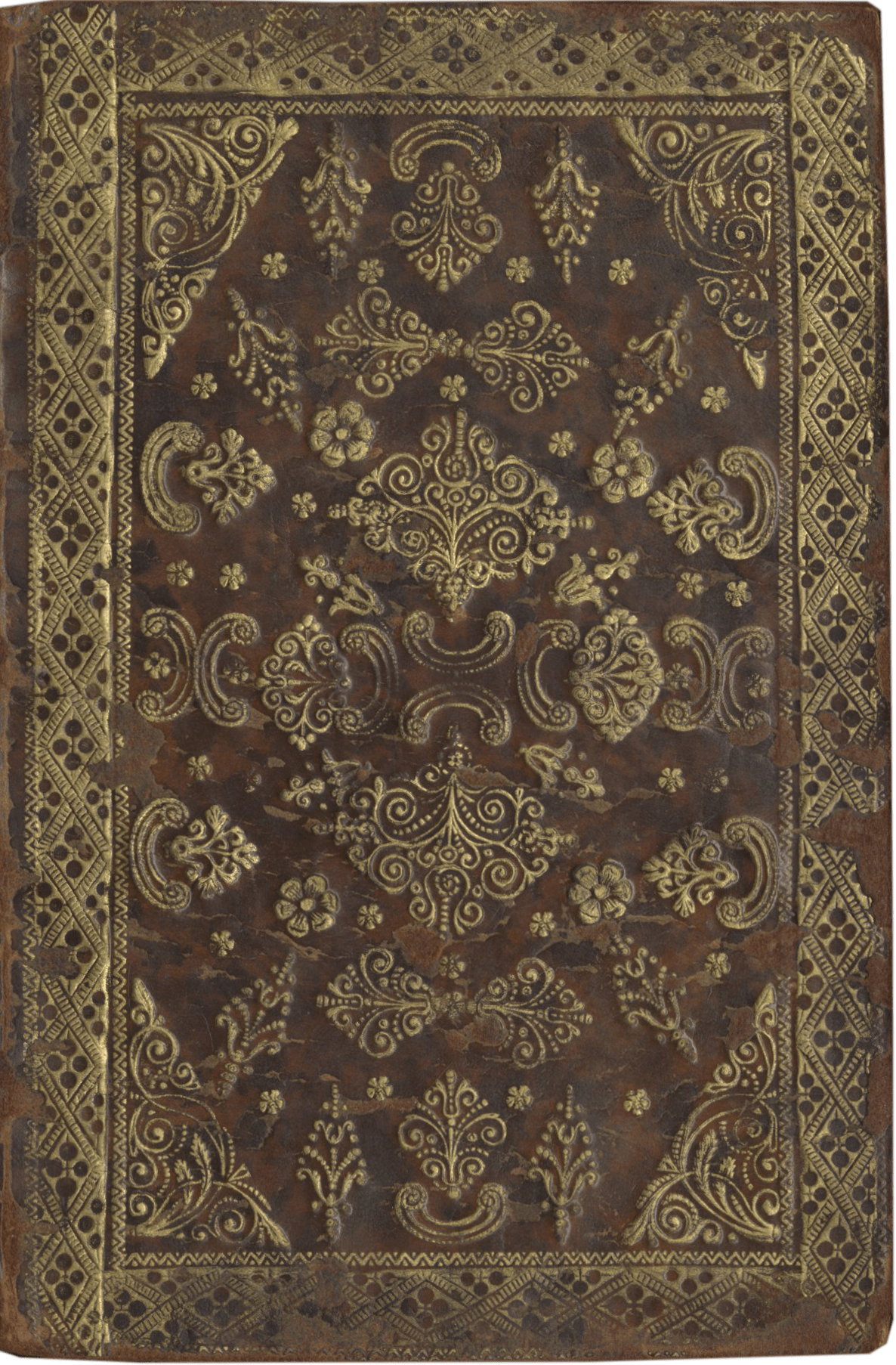




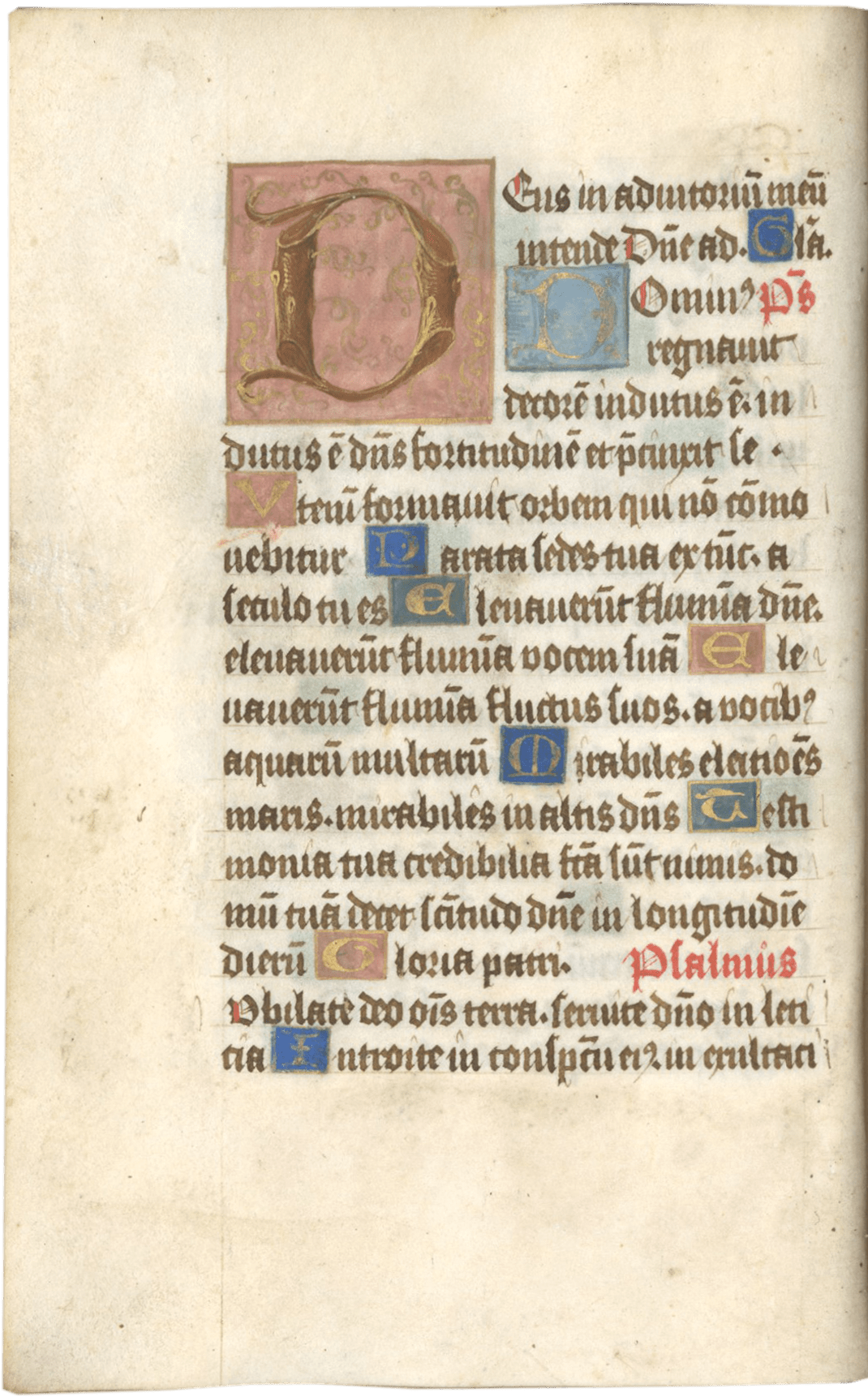



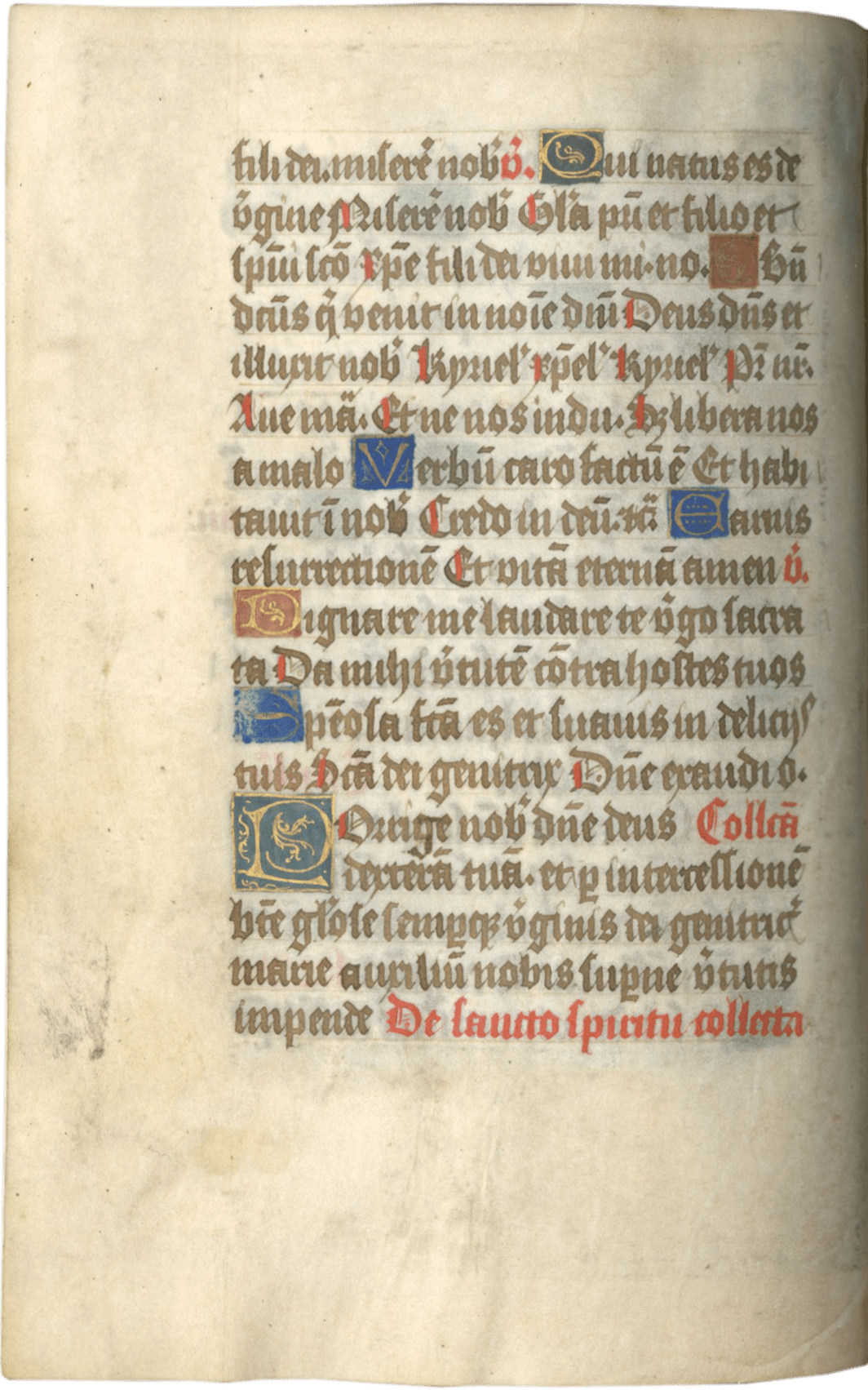
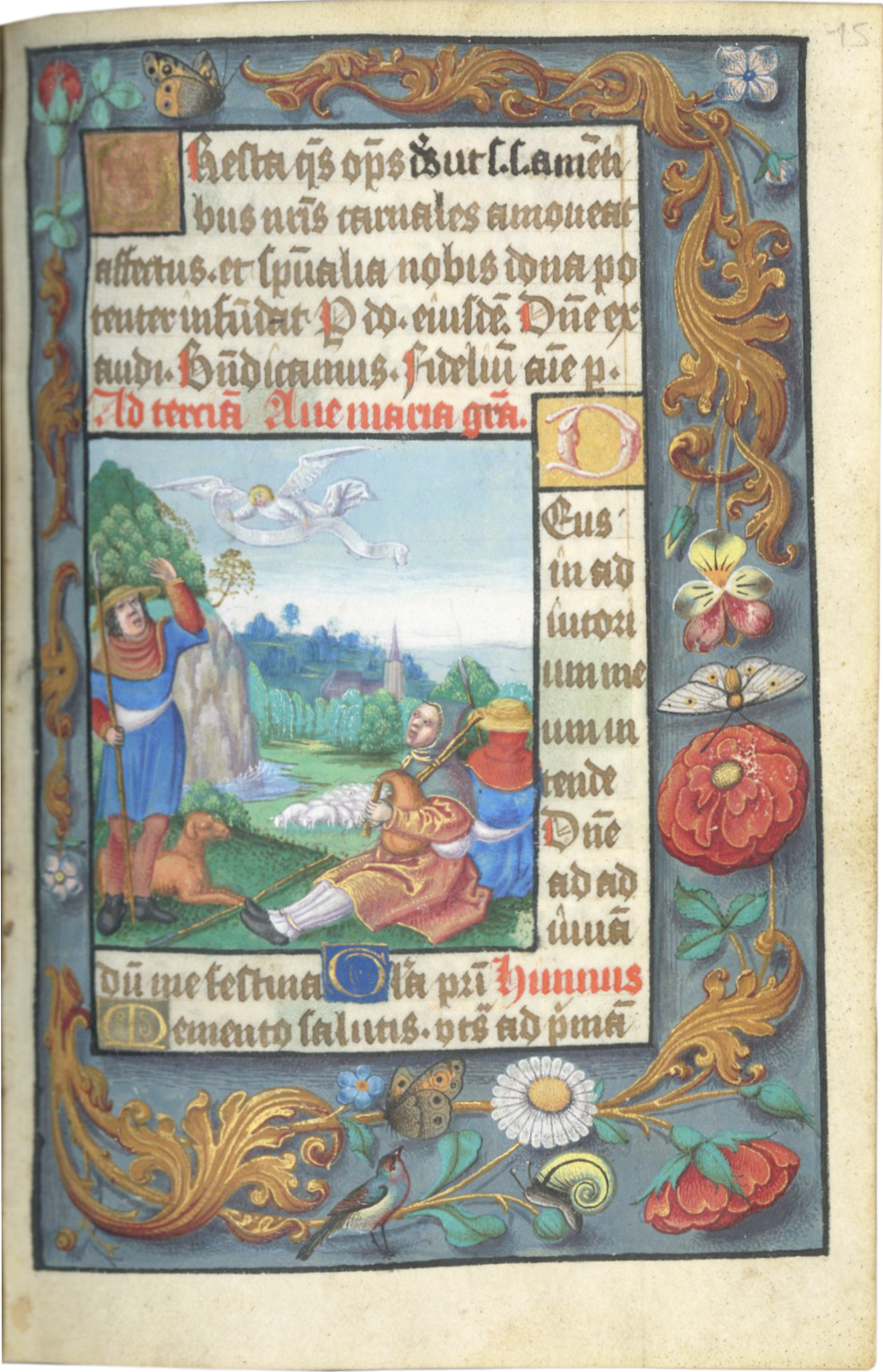
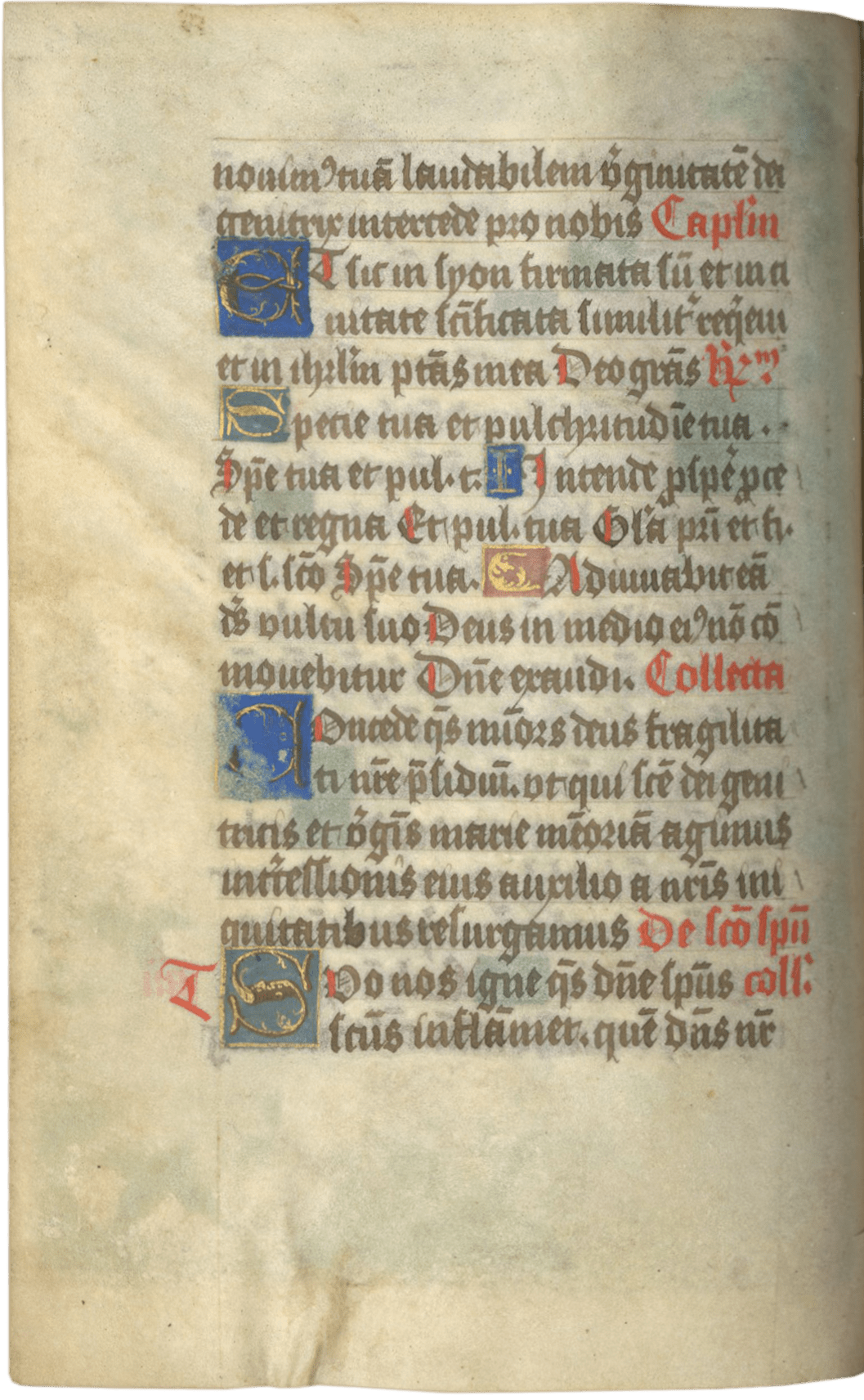



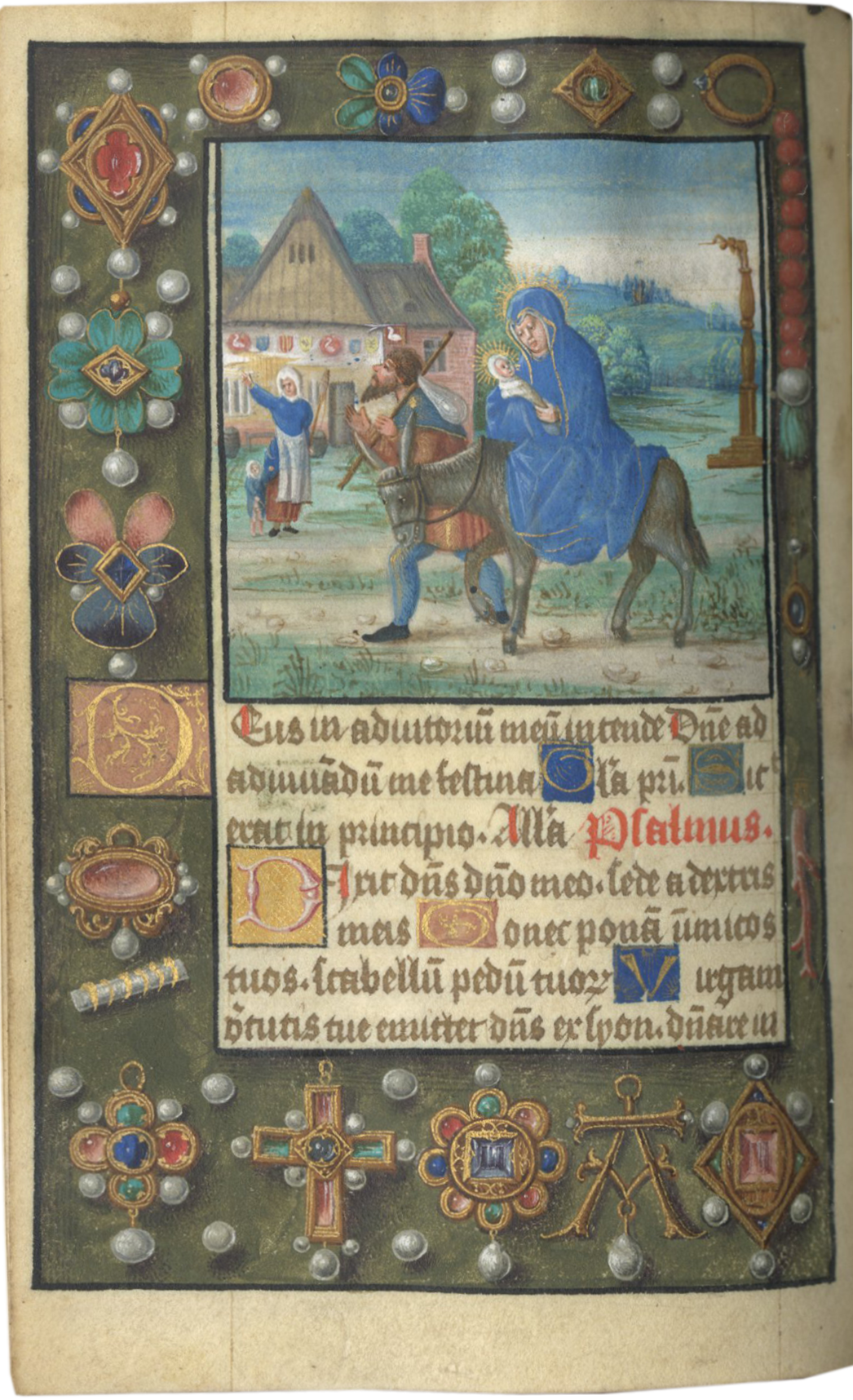
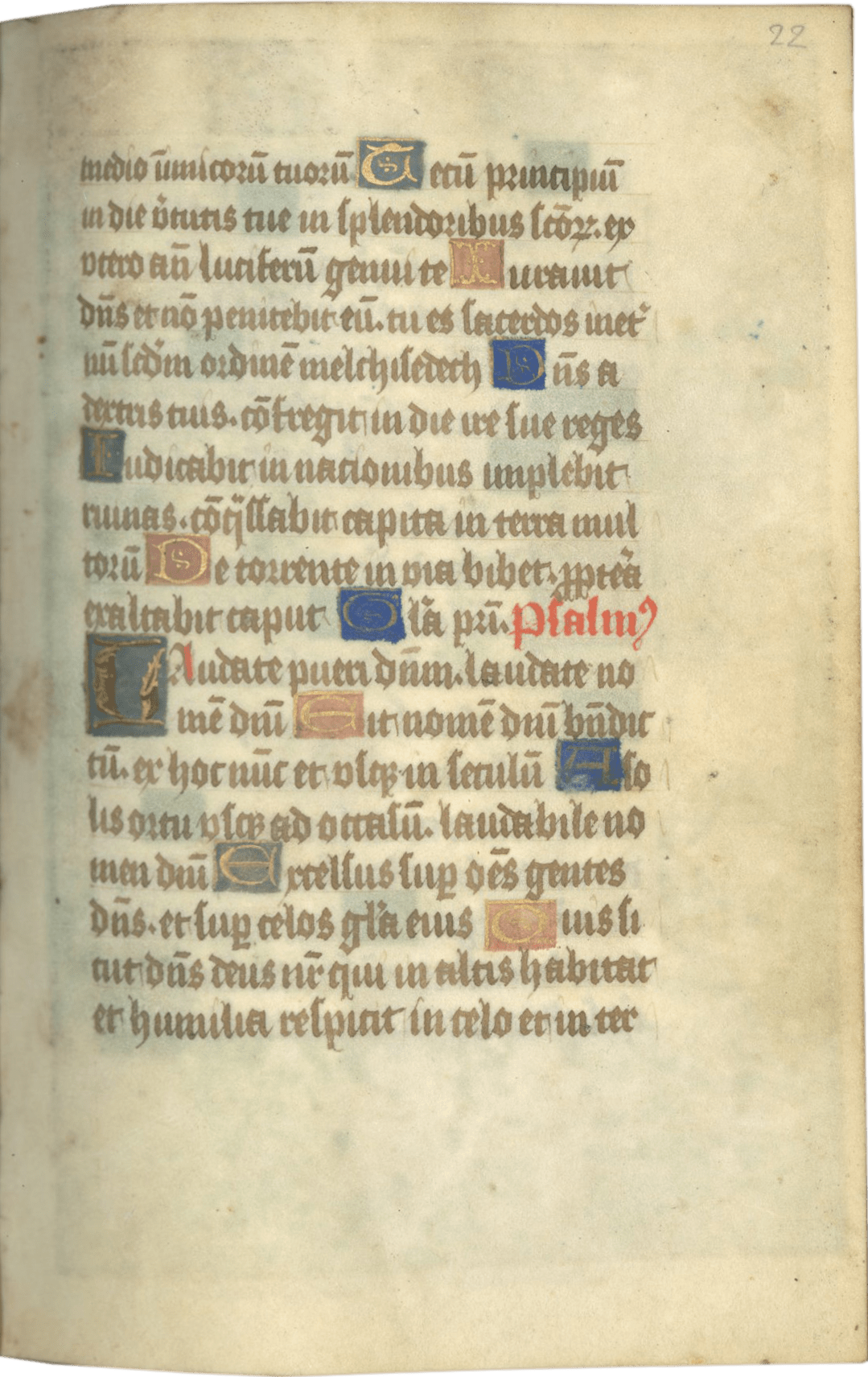
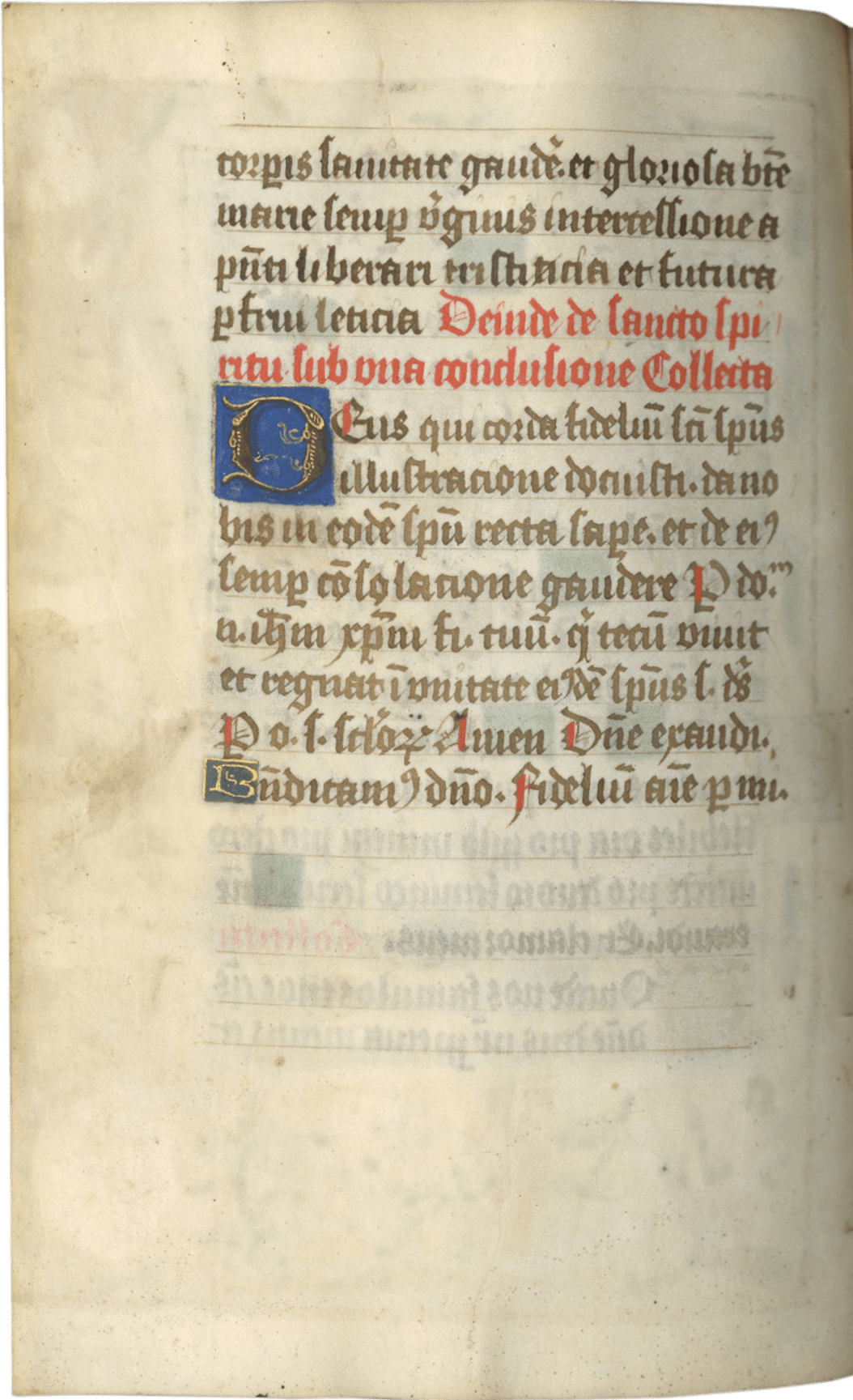
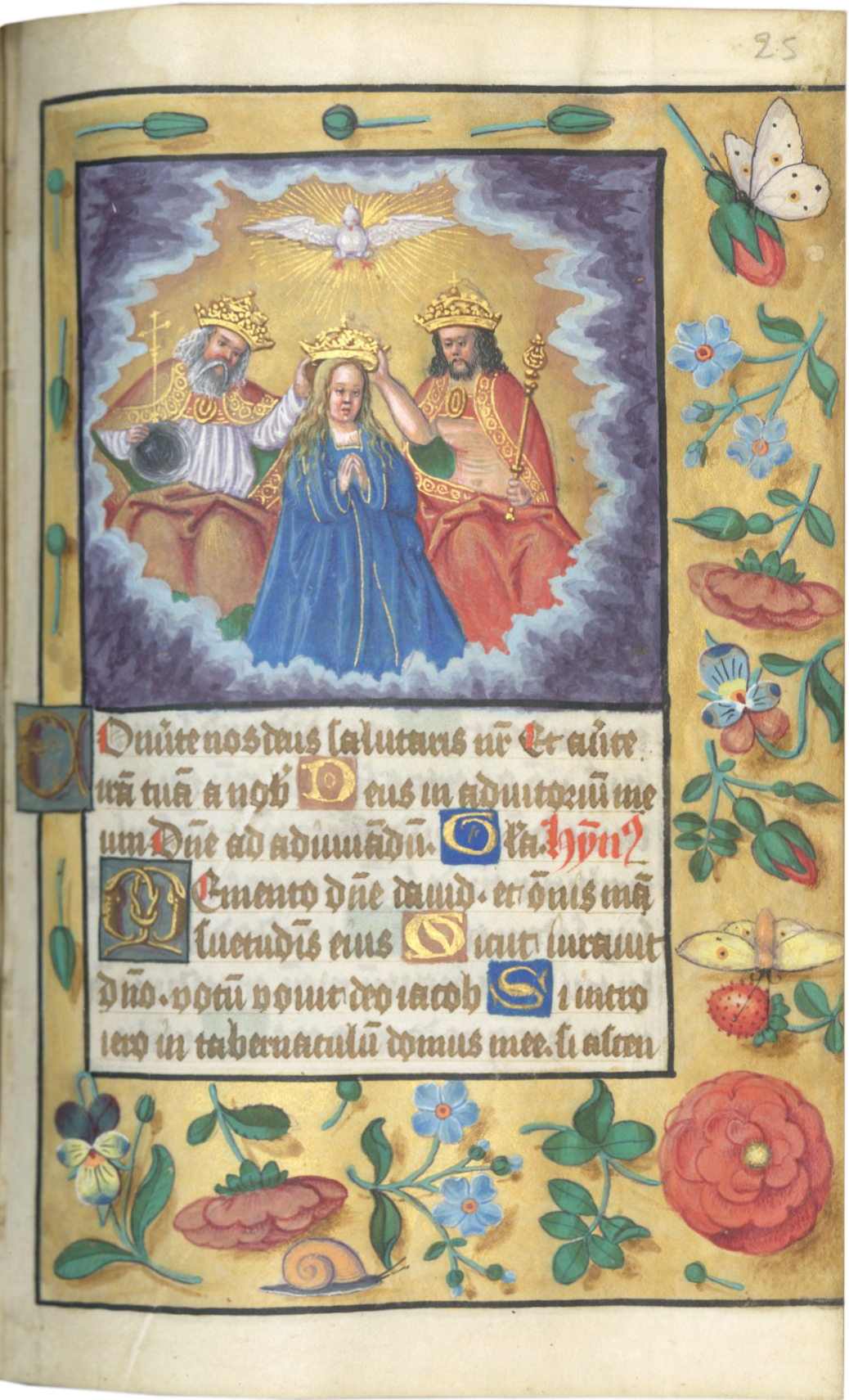
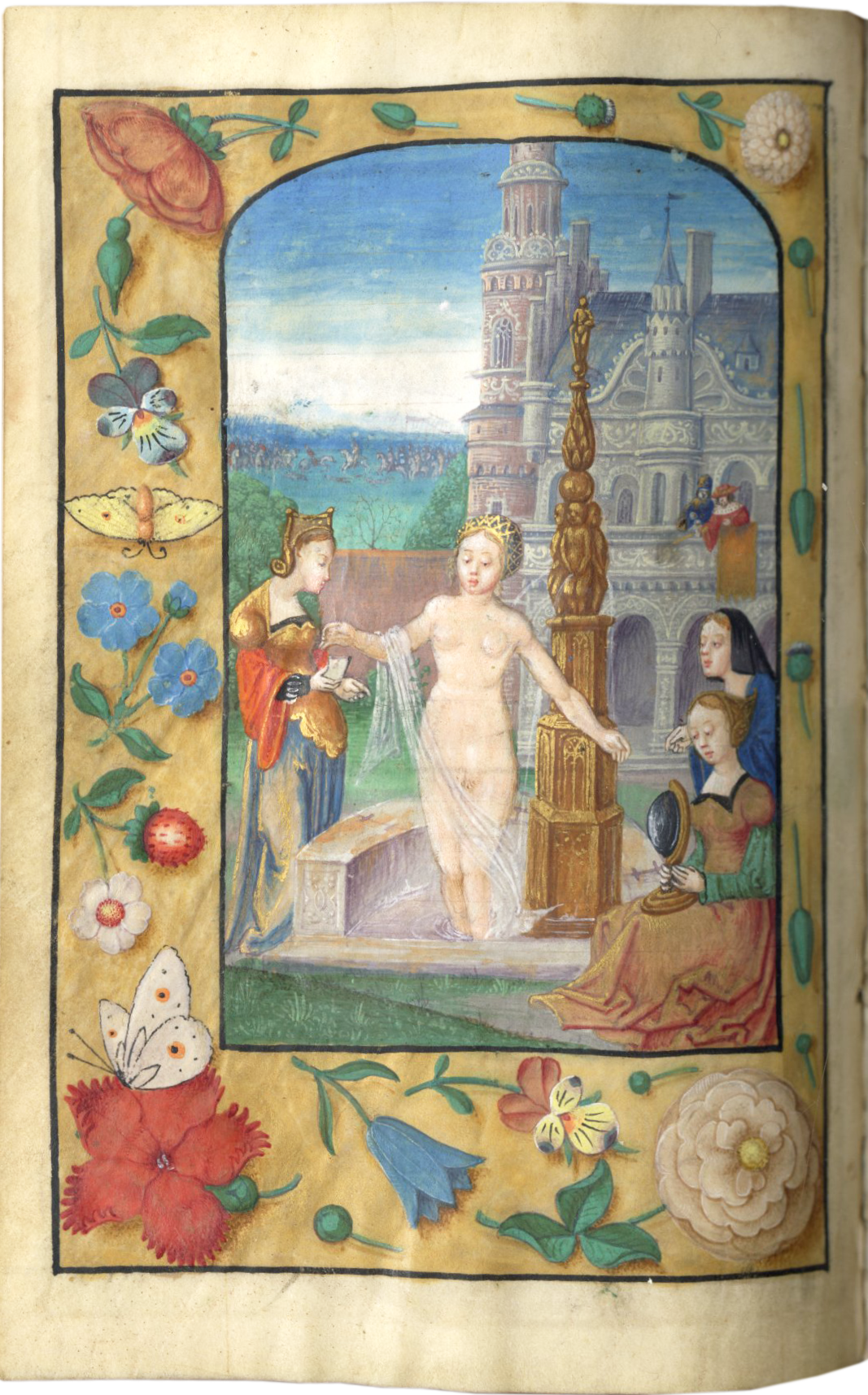
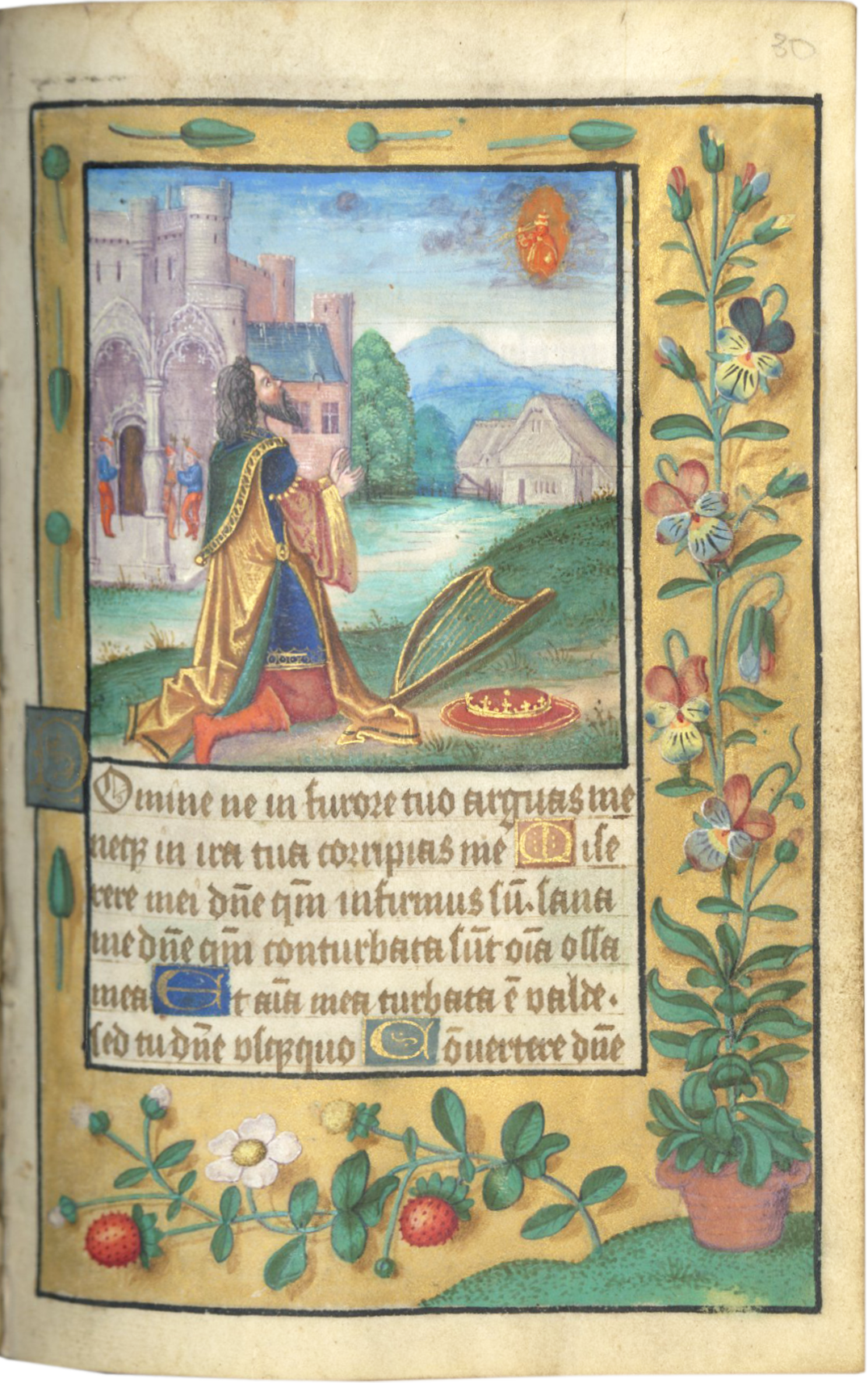

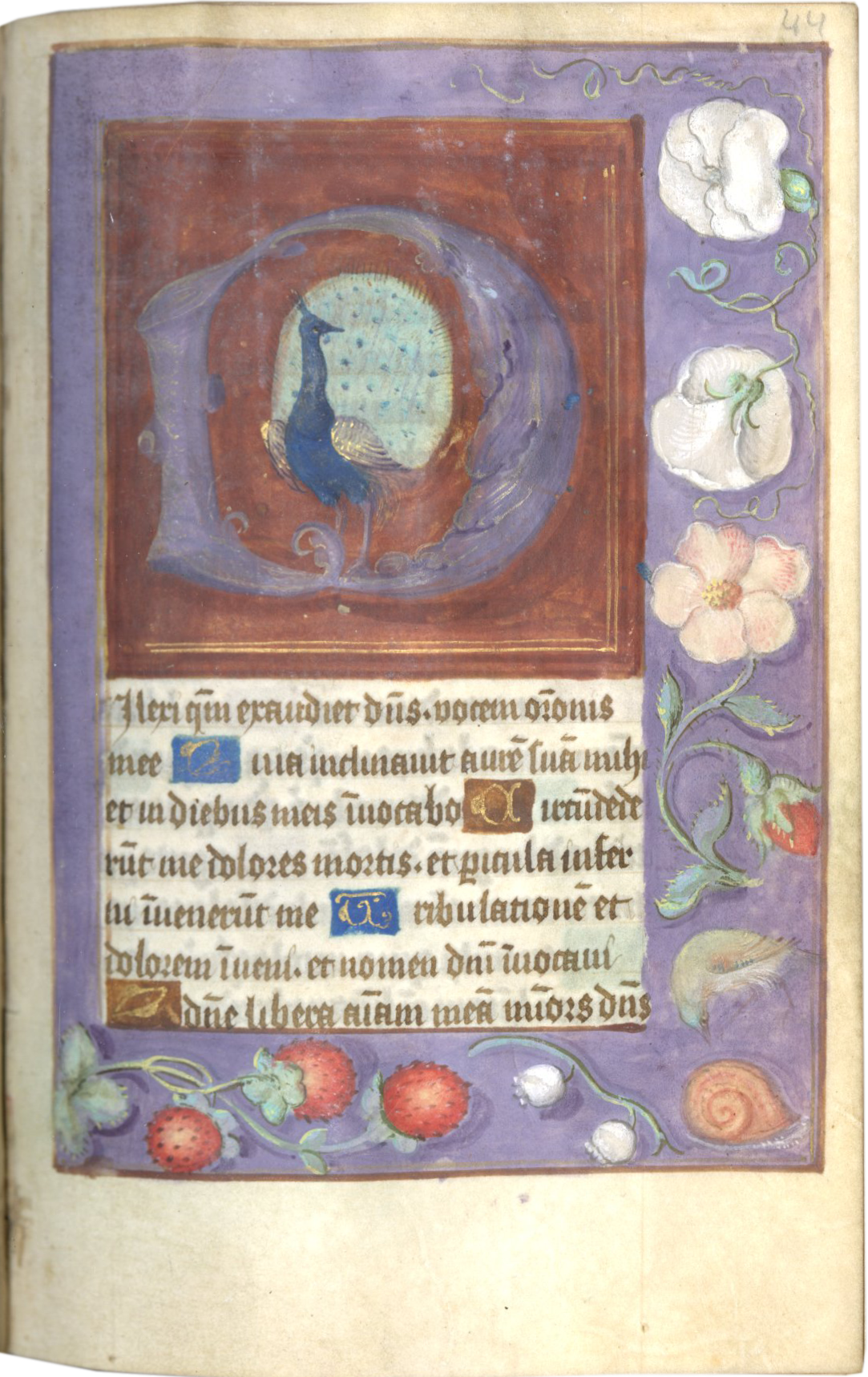
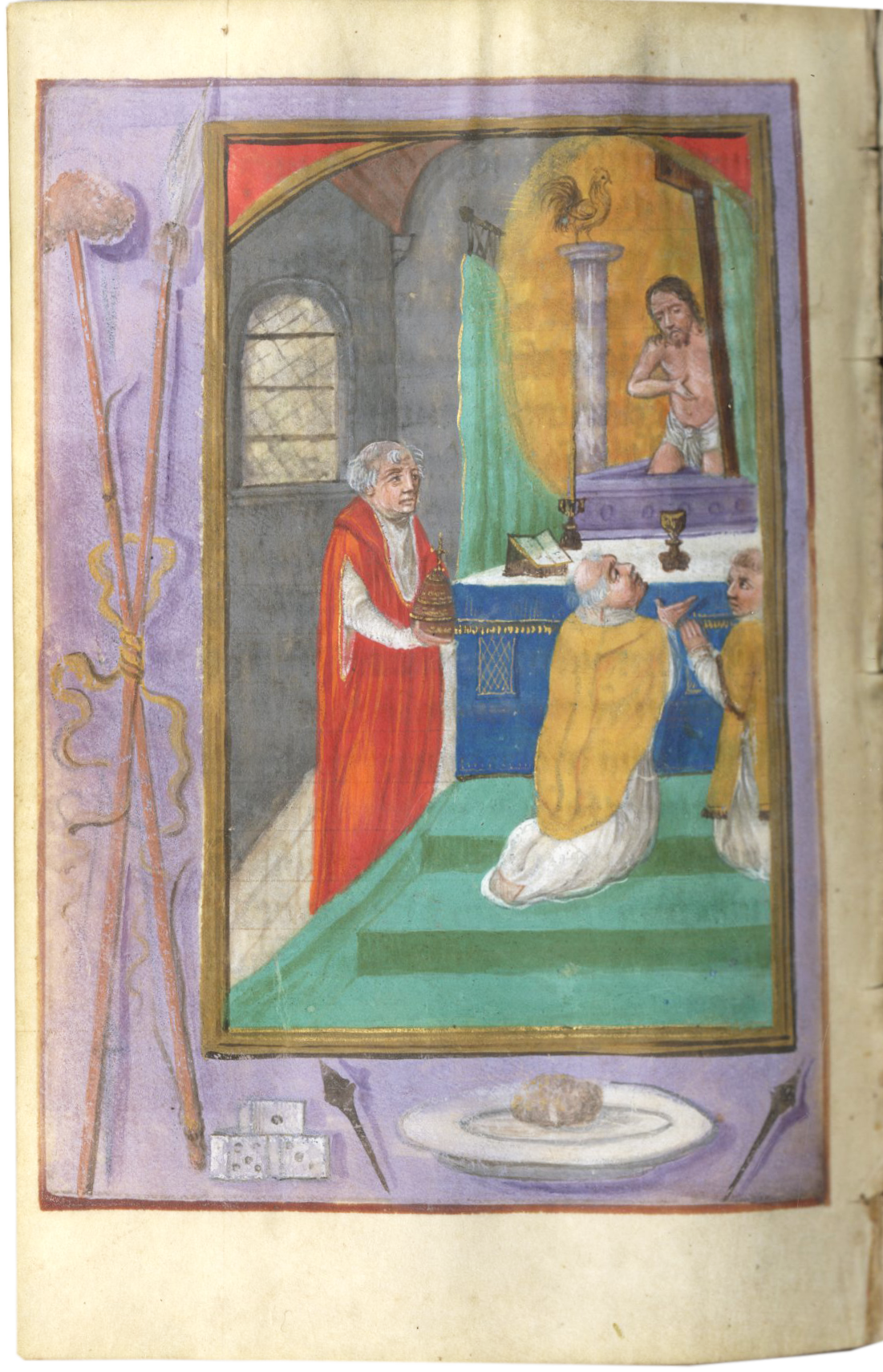

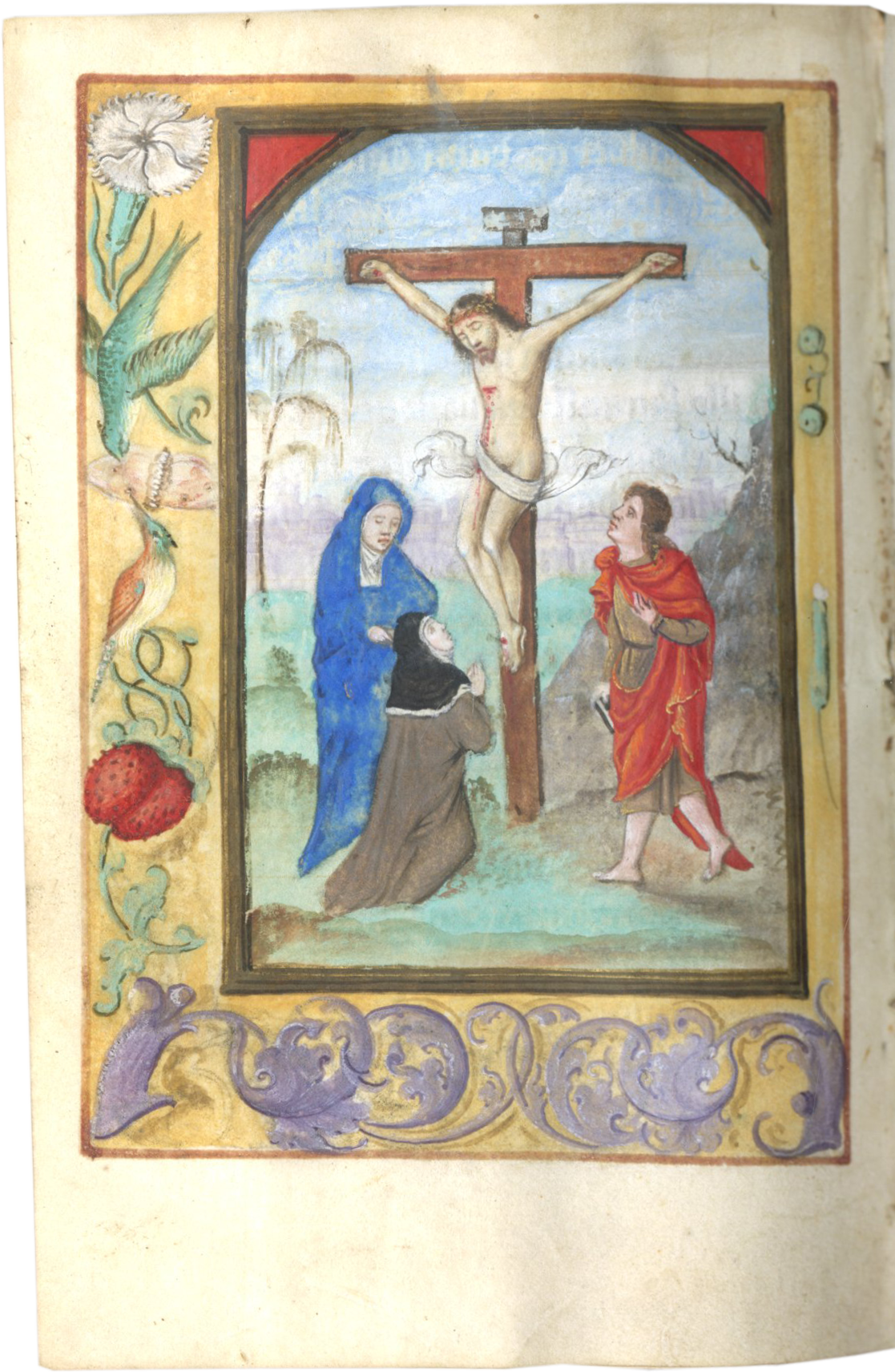
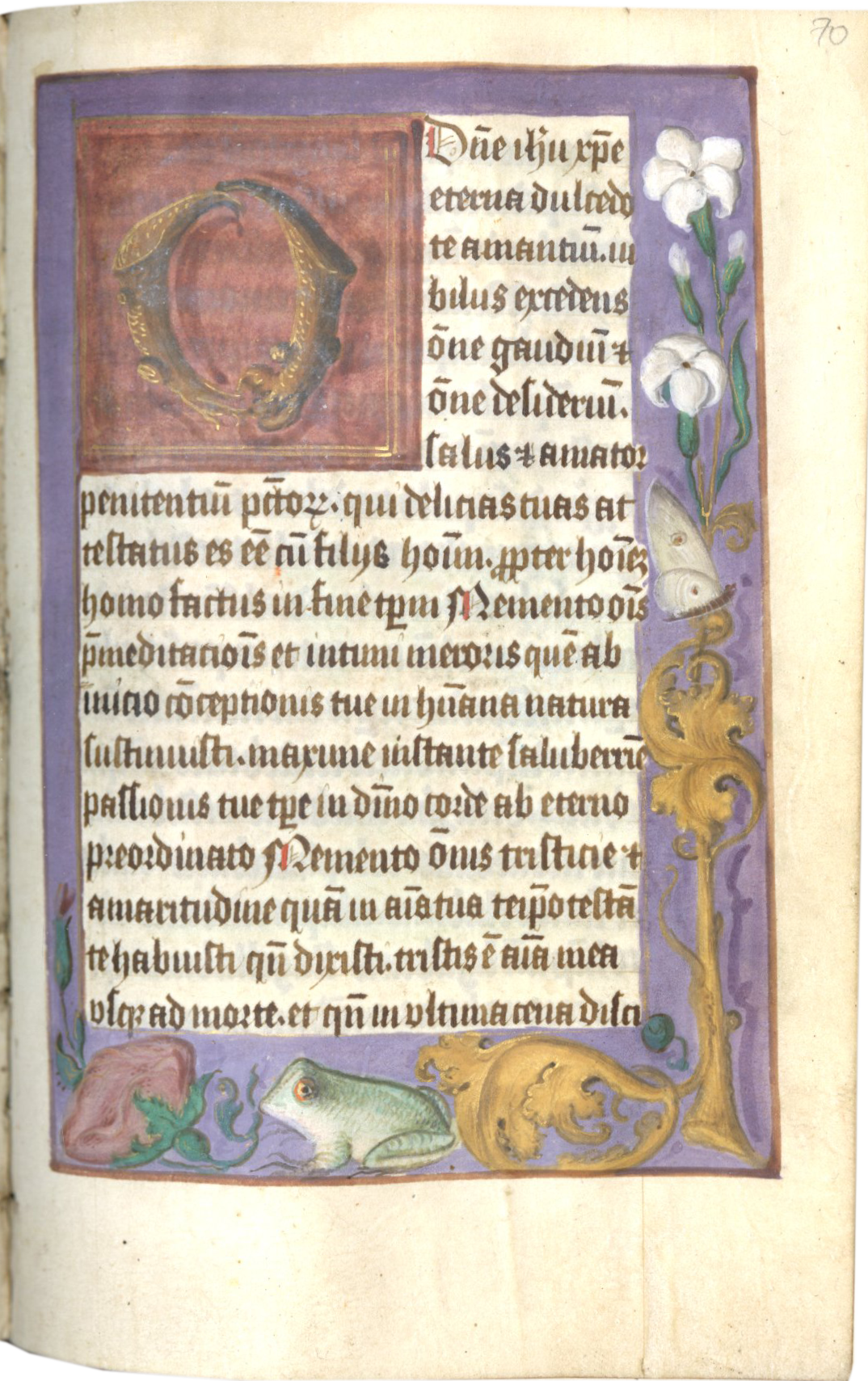

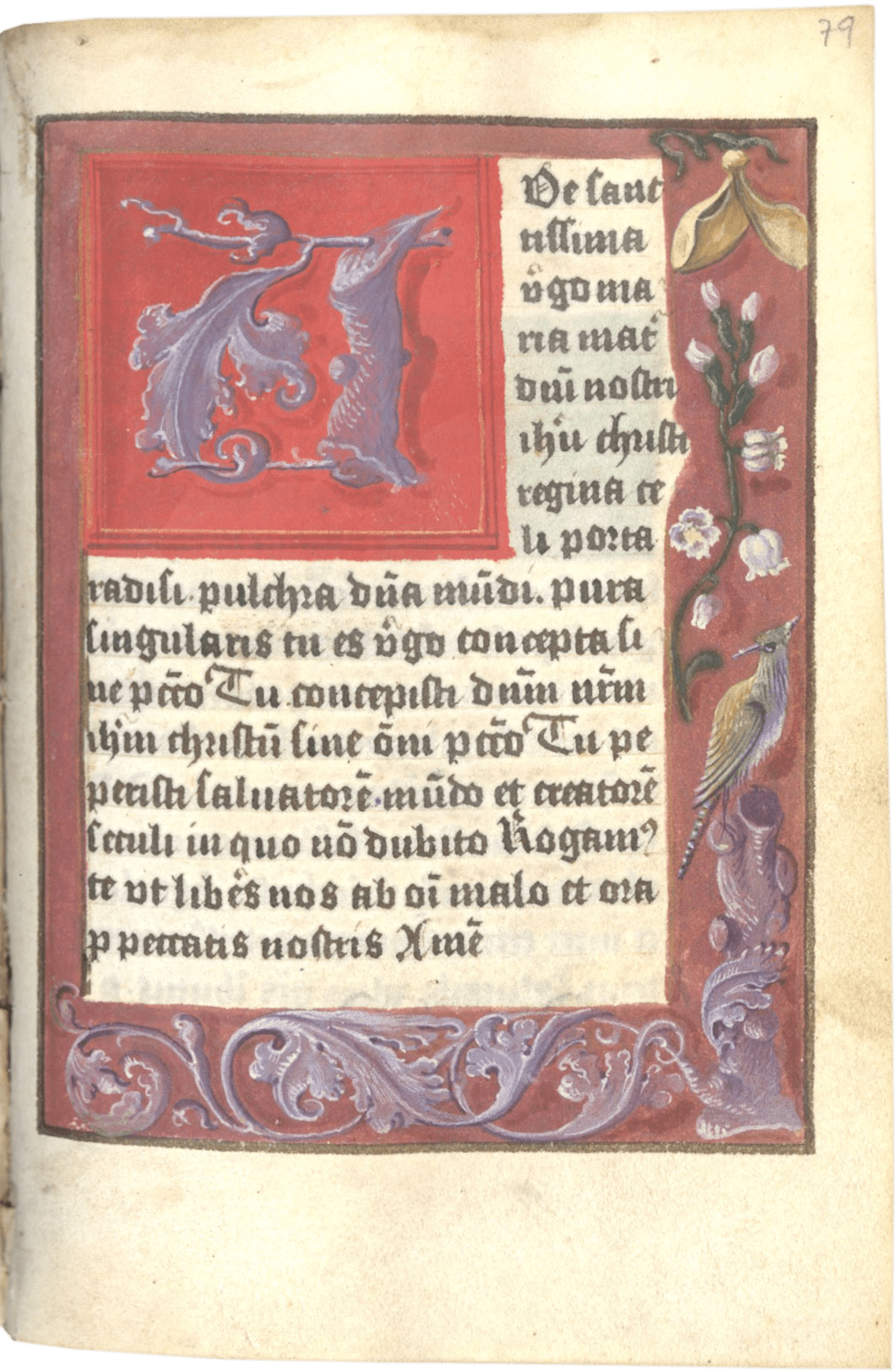
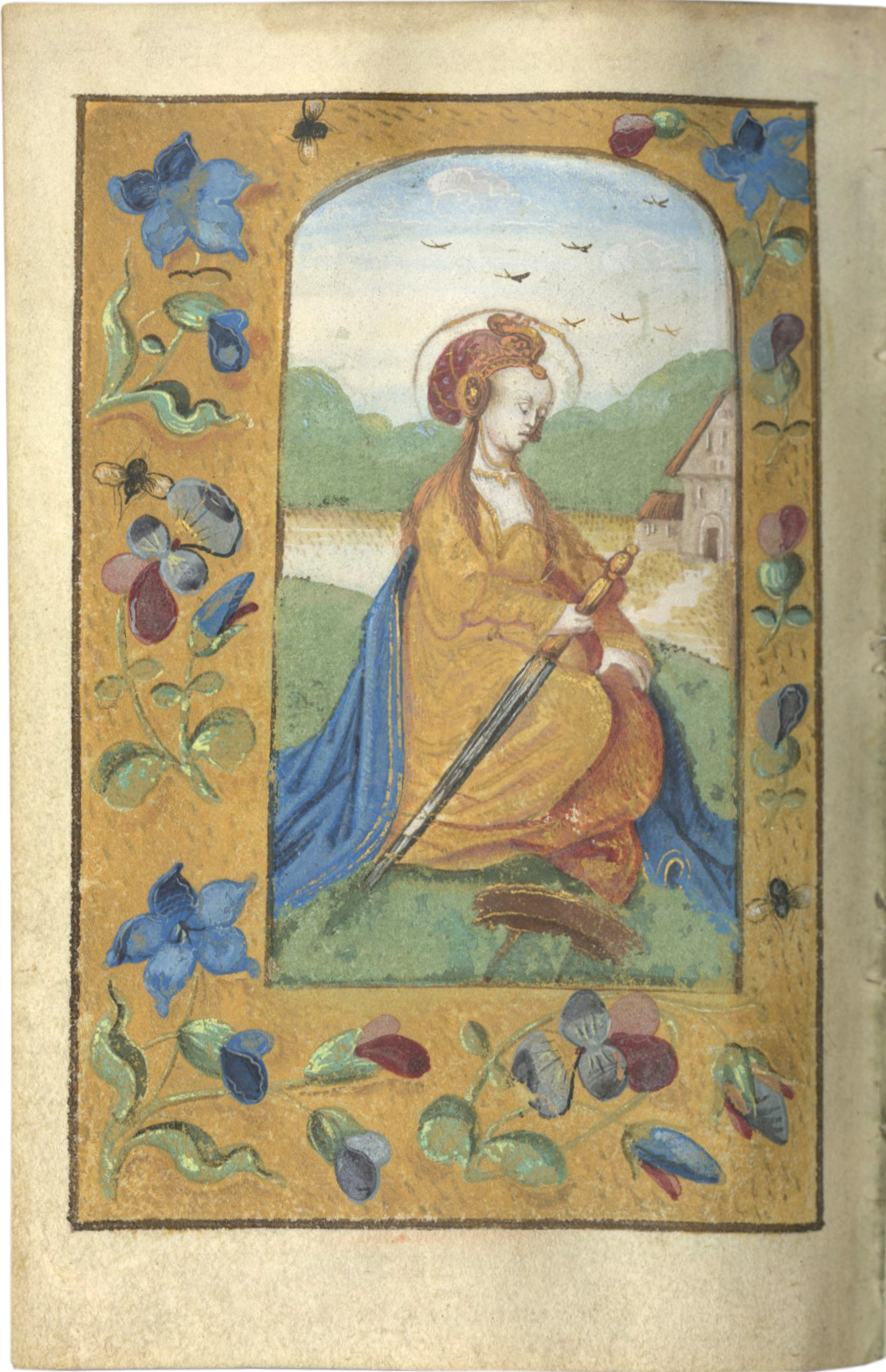





Description
Made for a woman, a nun, depicted kneeling before the Crucifixion (could she be named Catherine?), the manuscript was subsequently owned by a Dutchman, Johannes Meckis, who records his visit to an abbey in Friesland in 1557. Rich in decorative details both in the borders and the illuminations, the visual reality displayed in the manuscript reflects the blend of devotion and luxury in Books of Hours. Precious objects in a border, including rings, pendants, amulets, and a part of a rosary, recall the contents of a wealthy woman’s jewelry box (what our nun left behind upon taking vows?). The varied settings include a rustic inn with crests of different towns in the Flight into Egypt, as well as lavish castles in David and Bathsheba, and churchyard settings. Here is a realistic vision of the countryside and townscape in the Netherlands before Pieter Bruegel.
103 ff., lacking leaves between gathering 5 and 6 and likely lacking a calendar at beginning (collation: i7 [of 8, lacking i], ii-v8 , vi-x8 , xi6 [lacking i and viii], xii8+1 [vi an inserted singleton with miniature], xiii8), 18 lines, ruled in brown, justification 94 x 58 mm., written in brown or black ink in a Gothic liturgical hand between two verticals and 19 horizontals, rubrics in red, 1- and 2-line initials of liquid gold on grounds of brown, pink, blue or grey, 5 large illuminated or historiated initials and 7 half-page and 6 full-page miniatures, all miniatures and initials accompanied by full-page borders of Ghent-Bruges type, one with jewels, one with the instruments of Passion, and the others with strewn flowers, birds and insects on colored grounds (occasional spotting or staining especially affecting inner margins of final folios, loss of blue pigment from background of border on f. 1 revealing color instruction to illuminator (in Dutch), some smudging of rubrics and offsetting initial grounds towards end). Dutch seventeenth-century mottled calf binding gilt with a diapered frame and semé with drawer handle and floral tools, gilt edges, small surface losses from upper cover, corners and joints rubbed, short split at head of lower joint. Dimensions 145 x 95 mm.
Provenance
1. The liturgical use and the presence of St. Willibrord in the Litany show the manuscript was intended for use in the diocese of Utrecht, presumably by the nun who is represented kneeling before Christ on the Cross on f. 69v. Either she or a slightly later female owner may have been called Catherine and have been responsible for the insertion of the full-page miniature of St. Catherine on a single leaf facing the suffrage to that saint on f. 93. An initial “A” appears in the border on f. 21v.
2. Johannes Meckis or Merkis: his sixteenth-century ownership inscription “D[omi]n[u]s Johannis Meckis [or Merkis] in thabor AN[N]0 1557” on the final recto. This could record the owner’s visit to Mont Thabor in the Holy Land, or it could refer to his locale. There is a cloister of the Canons Regular at Thabor bij Sneek in Friesland.
3. Les Enluminures, Cat. 13, Roger S. Wieck with Sandra Hindman and Ariane Bergeron-Foote, Picturing Piety: The Book of Hours, no. 5, pp. 60-69, 2013.
4. European Private Collection.
Text
ff.1-29, Office of the Virgin, use of Utrecht, with Matins (f. 1), Lauds (f. 6), Prime (f. 12v), Terce (f. 15), Sext (f. 17), None (f. 19), Vespers (f. 21v), Compline (f. 25);
ff. 30-43, Seven Penitential Psalms, and Litany, lacking some leaves of the Litany, but including saints Poncian, Gereon, Lambert, and Willibrode, all of Utrecht;
ff. 43v-64, Office of the Dead, use of Utrecht;
ff.65-69, sequence of prayers and devotions opening with Seven Prayers of St Gregory;
ff.70-78, Fifteen O’s, prayers to the Virgin;
ff. 79-96v, prayers against the plague to saints Roch, Sebastian, Gregory, followed by suffrages to John the Baptist, all Patriarchs and Prophets, John the Evangelist, Bartholomew, all Apostles, George, Lawrence, Erasmus, Martin, Nicholas, Jerome, Catherine, Barbara, Margaret, Agnes, Apollonia and Anne (final gathering of eight ruled leaves left blank except for 16th-century ownership note).
Illustration
Full-page miniatures:
f. 29v, David and Bathsheba;
f.43v, Raising of Lazarus;
f. 64v, Mass of St Gregory;
f. 69v, Crucifixion with a nun;
f. 78v, Virgin and Child on a Crescent Moon;
f. 92, St. Catherine. Half-page miniatures:
f. 12v, Nativity; f.15, Annunciation to the Shepherds;
f. 17, Adoration of the Magi;
f. 19, Presentation in the Temple;
f. 21v, Flight into Egypt, border with jewels;
f. 25, Coronation of the Virgin;
f.30, David in Penitence.
Full-page borders and large illuminated initials are on ff. 1, 44, 65, 70 and 79.
The illumination of this Book of Hours, the work of at least three artists, is in the style of the Masters of the Suffrages, a group of Dutch illuminators who were active, most likely in Leiden, in the first three decades of the sixteenth century. They are named after the Suffrage miniatures in a Book of Hours in Vienna (Österreichische Nationalbibliothek, MS S. n. 13236). As exhibited in the present Horae, their style is characterized by panel borders with trompe-l’oeil strewn flowers and insects (and the occasional bird or butterfly); such borders are modeled after those by their Flemish colleagues working in Ghent and Bruges in the late fifteenth and early sixteenth centuries. The style of the Masters of the Suffrages is also characterized by figural and compositional types that were clearly influenced by Dutch Mannerist panel painting. We see such influences in the miniature of Bathsheba Bathing (f. 29v), the finest in the book. David’s future consort, seductively draping her privates while scarcely concealing them, is attended by women who wear fantastic costumes with fussy necklines, elaborate sleeves, and fanciful headgear; David observes the scene from the balcony of a palace built along Mannerist architectural conceits. In the facing miniature, the penitent David (f. 30) literally turns his back on his past source of sin--and even his palace has assumed conservative Gothic form. How interesting that this thoroughly secularized scene occurs in a manuscript made for a nun (depicted on f. 69v praying before the Crucifixion).
The second illuminator, though not as gifted as the main artist, is not without his charm. In the opening with the miniature of the Mass of St. Gregory (ff. 64v-65), the pope and his attendants look duly shocked (as well they might) at the vision of the bleeding Christ who appears upon their altar. The arma Christi (instruments of the Passion) fill the borders while the facing miniature features a spooky Crown of Thorns that, floating against its monochromatic background, casts eerie shadows.
The miniature of St. Catherine was painted by a third artist. Stylistically his work is perhaps closest to that of the eponymous manuscript in Vienna as well as to a related Book of Hours in Philadelphia. The trompe-l’oeil decorated initials like that found on f. 1 are of great charm, and this folio offers additional interest because it preserves clearly visible color instructions in Dutch to the illuminator.
Literature
Defoer, Henri, Anne Korteweg, and Wilhelmina Wüstefeld. The Golden Age of Dutch Manuscript Painting. New York, NY: George Braziller, 1990, 16, 285-88, 297-300, nos. 106-109.
Pächt, Otto, and Ulrike Jenni. Die illuminierten Handschriften und Inkunabeln der Österreichischen Nationalbibliothek. Band 3: Holländische Schule. Vienna: Österreichische Akademie der Wissenschaften, 1975, I, 104-08, II, illus. 297-307, 309, 312, pl. IX,
Tanis, James, Jennifer Thompson, et. al. Leaves of Gold: Manuscript Illumination from Philadelphia Collections. Philadelphia: Philadelphia Museum of Art, 2001, 91-92, no. 25, illus.
Online Resources
http://www.kb.nl/manuscripts/index.html
BOH 243